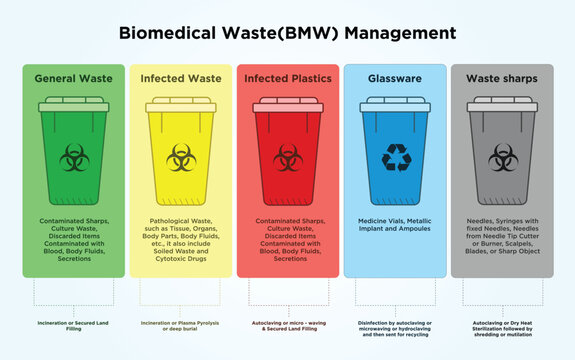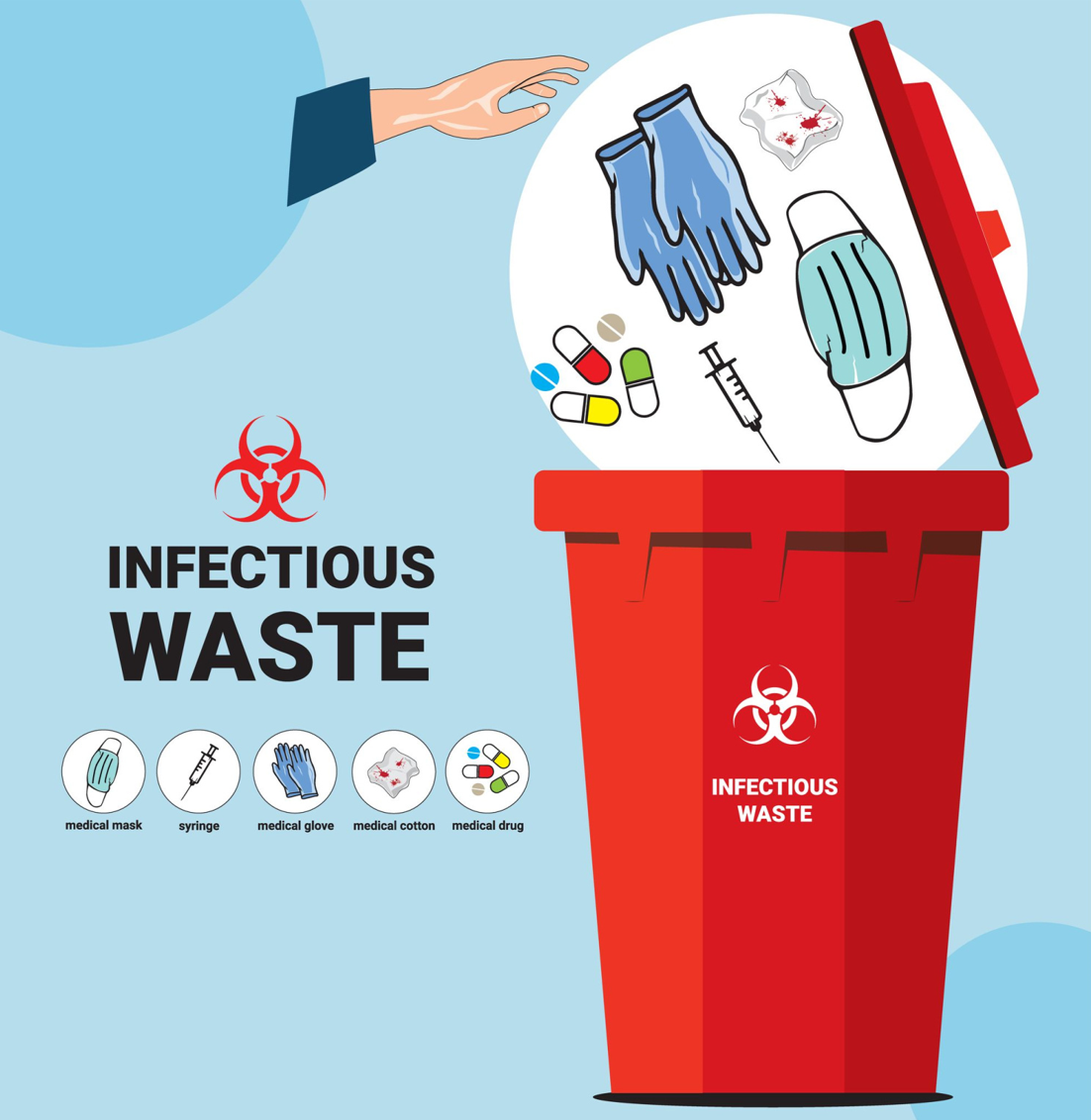Strategic Medical Waste Disposal Solutions: Promoting Safety and Sustainability
Compliance and Regulations for Medical Waste Disposal
Conformity and policies for medical waste disposal play an important duty in making certain the safety and wellness of both health care experts and the basic public. Correct management of medical waste is important to avoid the spread of infections, secure the setting, and keep public wellness. These regulations encompass various aspects, including the classification and segregation of medical waste, proper storage space and handling procedures, as well as transportation and disposal methods.
Importance of Compliance
The significance of compliance with guidelines for clinical garbage disposal can not be overstated. Proper disposal of medical waste is vital for ensuring the safety and well-being of health care workers, individuals, and the basic public. Clinical waste, which consists of things such as utilized needles, polluted handwear covers, and biomedical waste, can posture significant health and wellness dangers otherwise taken care of and thrown away properly.
Conformity with laws makes certain that clinical waste is handled in such a way that reduces the potential for exposure to transmittable conditions and damaging compounds - medical waste removal service. It helps prevent the spread of infections, such as HIV, hepatitis B and C, and other bloodborne pathogens. Compliance also plays a vital function in protecting the environment by stopping contamination of water resources, dirt, and air
Failing to abide by guidelines can cause serious repercussions for health care facilities, consisting of penalties, legal activity, and damage to their track record. Furthermore, non-compliance may jeopardize the health and wellness of health care employees, clients, and the community.
Conformity with guidelines for clinical garbage disposal needs adherence to specific standards and methods. These may consist of correct partition, packaging, labeling, and storage space of clinical waste. It also includes making use of approved disposal methods, such as autoclaving, landfilling, or incineration, relying on the kind of waste.
Regulative Agencies and Bodies
Governing firms and bodies play a vital duty in overseeing compliance with guidelines for clinical garbage disposal. These companies are in charge of setting guidelines, requirements, and methods to guarantee the secure and correct handling of medical waste. They keep an eye on and apply compliance to secure public health and the setting.
Among one of the most prominent regulative companies in the USA is the Environmental Security Company (EPA) The EPA is responsible for controling the storage, transportation, therapy, and disposal of clinical waste. They develop standards for waste generators, transporters, and treatment facilities to comply with, making certain that all necessary safety measures are taken to avoid the spread of illness and contamination.
One more vital regulatory body is the Occupational Security and Wellness Administration (OSHA) OSHA sets requirements and regulations to shield workers from occupational risks, consisting of those related to clinical waste. WasteX Medical Waste Disposal. They offer standards for the secure handling and disposal of clinical waste to protect staff members in medical care facilities
In enhancement to these government agencies, specific states also have their own regulatory bodies that oversee medical waste disposal. These companies might have their own certain guidelines and needs that should be followed.

Category and Partition of Medical Waste
To guarantee proper management of clinical waste, it is important to identify and segregate it according to developed standards and procedures. medical waste disposal. Classification and segregation play an essential role in minimizing the risk of infection, shielding the setting, and ensuring the safety of healthcare employees and the general public
Clinical waste is categorized into different groups based upon its potential hazard degree. These classifications consist of transmittable waste, pathological waste, sharps waste, pharmaceutical waste, chemical waste, and radioactive waste. Each group needs specific handling, transport, disposal, and storage approaches to decrease the threat of exposure and contamination.
Segregation of medical waste involves separating different sorts of waste at the resource. This procedure ensures that waste with various threat degrees is not combined, lowering the possibility for cross-contamination and making disposal procedures extra reliable. Appropriate segregation is achieved through the use of color-coded containers and labels, which assist health care workers and waste administration personnel take care of each kind and determine of waste properly.
In addition to classification and segregation, healthcare centers have to additionally follow local, state, and federal laws pertaining to clinical waste administration. These policies outline specific needs for storage space, transport, therapy, and last disposal of medical waste, making sure compliance and maintaining public health and security.
Appropriate Storage Space and Taking Care Of Procedures
Proper storage space and managing treatments play a vital duty in ensuring the certified and secure management of medical waste. Medical waste, which includes things such as made use of syringes, contaminated gloves, and ended medicines, can present major health and wellness and ecological risks otherwise taken care of properly. Consequently, it is crucial for healthcare facilities and various other generators of clinical waste to implement strict storage and dealing with protocols.
To start with, clinical waste ought to be stored in sturdy, watertight containers that are particularly created for this function. These containers ought to be labeled with the universal biohazard symbol and words "clinical waste" to clearly show the contents. Furthermore, the containers ought to be kept securely near prevent any potential leak or splilling.
Moreover, it is essential to segregate different sorts of clinical waste to stop cross-contamination. Sharps, such as needles and scalpels, need to be saved in puncture-resistant containers to lessen the threat of injuries - WasteX Medical Waste Disposal. Chemical waste, such as solvents and disinfectants, need to be kept independently from various other kinds of clinical waste to avoid hazardous direct exposures or chemical responses

Transportation and Disposal Approaches
Medical care centers need to guarantee the safe transportation and correct disposal of their clinical waste to follow laws and secure public health. Transport and disposal approaches play a crucial duty in preventing the spread of transmittable illness and lessening the environmental impact of clinical waste.
To move medical waste, medical care centers need to make use of watertight and puncture-resistant containers that are labeled with the biohazard symbol. These containers should be firmly secured to stop any leakage throughout transport. In addition, health care facilities ought to establish methods for the transportation process, including using experienced workers and dedicated lorries.
As soon as the medical waste gets to the disposal center, it goes through various approaches of therapy - WasteX Medical Waste Disposal. One typical method is incineration, which includes burning the waste at high temperature levels to destroy virus and reduce the volume of waste.
It is essential for medical care facilities to collaborate with licensed and allowed waste monitoring business to ensure proper transportation and disposal of medical waste. These companies have the know-how and resources to take care of medical waste safely and in compliance with laws.
Final Thought
To conclude, conformity with guidelines for clinical waste disposal is of utmost importance to make sure public wellness and security. Governing firms and bodies play a vital function in applying these laws. Appropriate category and segregation of clinical waste, as well as complying with ideal storage and managing procedures, are necessary to avoid contamination and the spread of conditions. Adequate transportation and disposal approaches additional resources must be executed to reduce ecological influences. Overall, adherence to compliance and regulations is necessary to efficiently manage medical waste.
Clinical waste, which includes products such as utilized needles, polluted gloves, and biomedical waste, can present major health dangers if not managed and disposed of correctly.
These categories consist of contagious waste, pathological waste, sharps waste, pharmaceutical waste, chemical waste, and radioactive waste.Segregation of medical waste entails dividing various kinds of waste at the resource. Appropriate partition is accomplished with the use of color-coded labels and containers, which help healthcare employees and waste monitoring employees deal with each type and recognize of waste appropriately.
Chemical waste, such as anti-bacterials and solvents, should be saved independently from other kinds of medical waste to prevent harmful direct exposures or chemical responses.